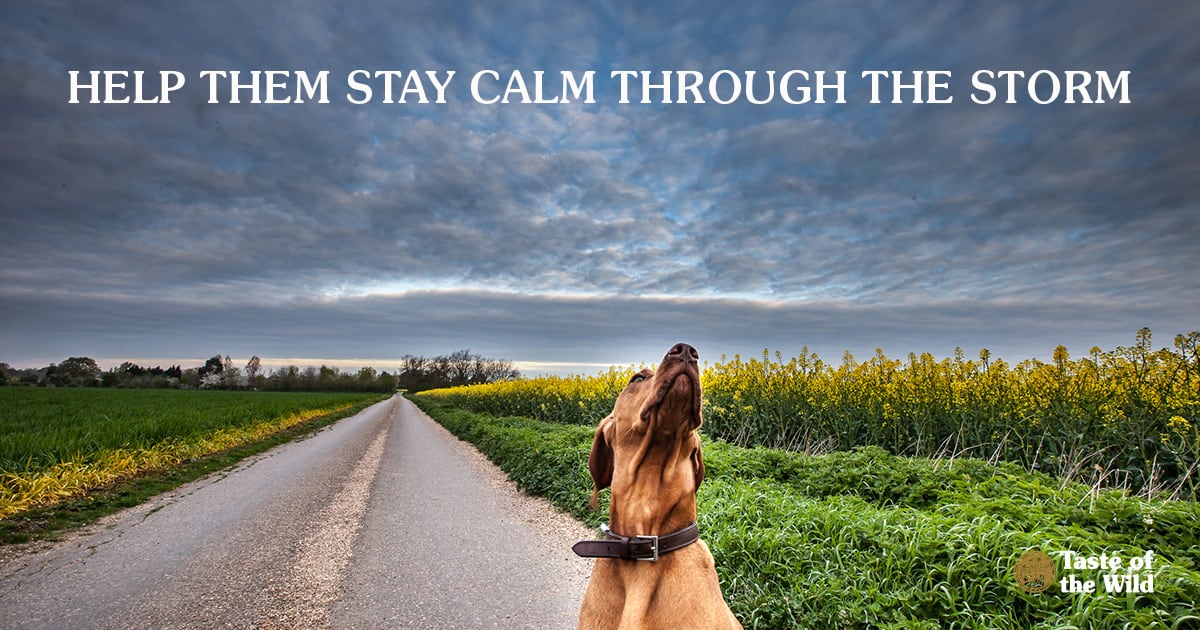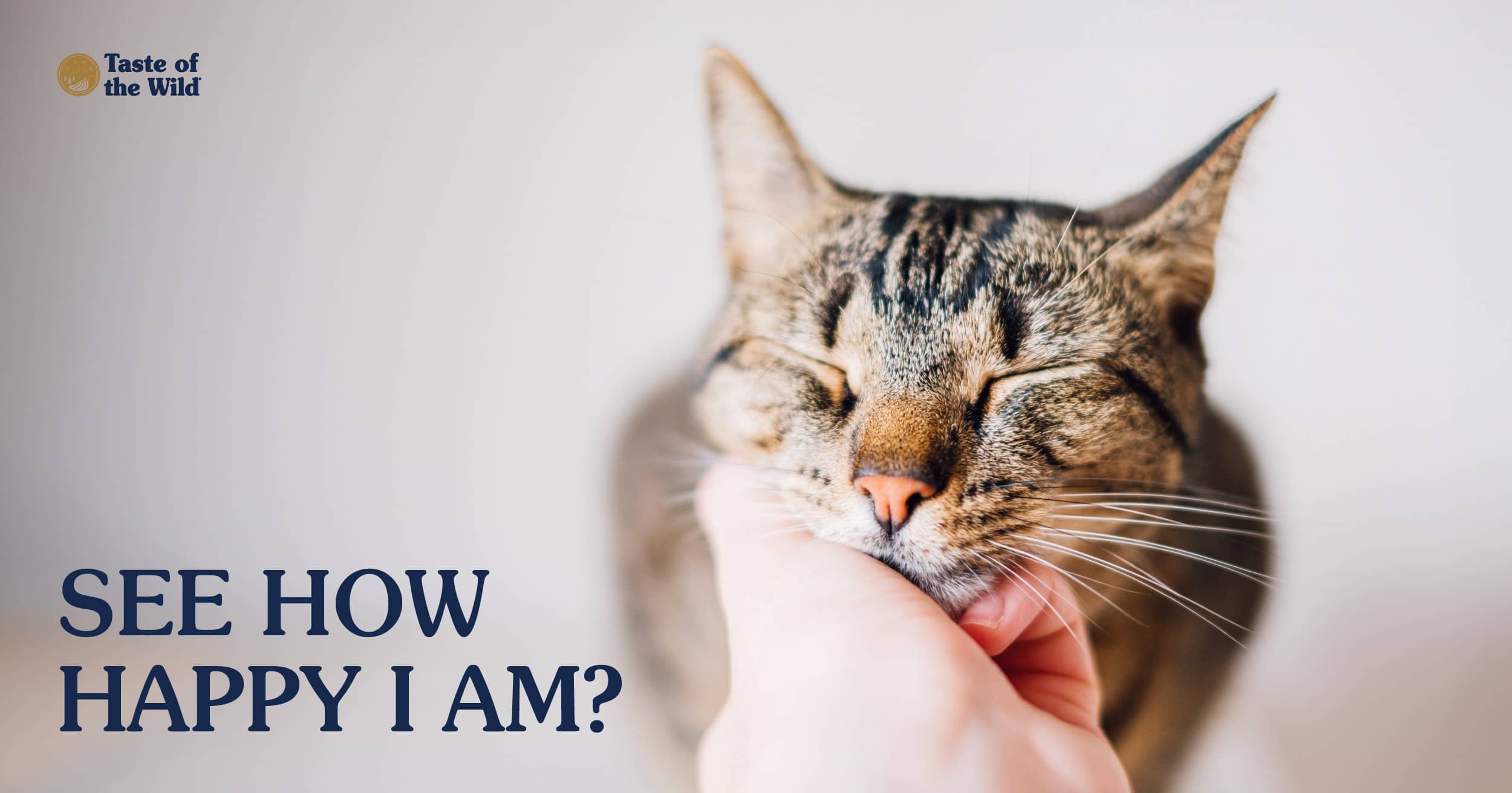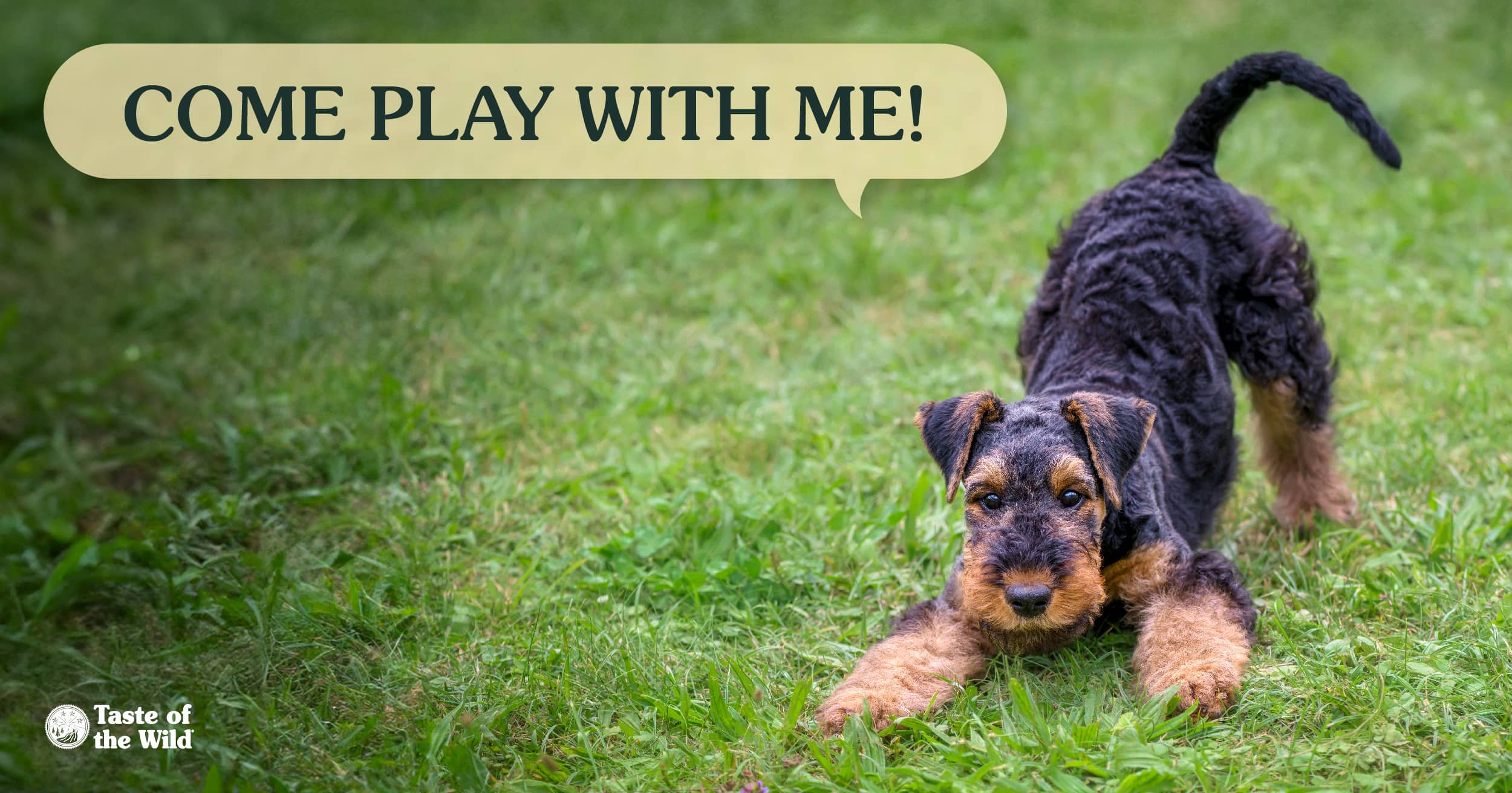10 Ways to Calm Your Dog When the Thunder Rumbles
Thursday, June 8, 2017 | Training & Behavior

Can your dog predict thunderstorms more accurately than the Weather Channel? Do they pace, pant or whine hours before the first dark cloud rolls in? Have they ever chewed or scratched your doors or windows in an effort to get inside the house (or vice versa) during a storm? Do they tremble and hide at the first drop of rain? If so, they may be showing the signs of storm anxiety.
THE ROOT OF THE PROBLEM
For some dogs, the sound of thunder — as well as fireworks or gunshots — may be what’s upsetting. For others, it’s the whole package: the thunder, the lightning, the change in barometric pressure, the static electricity, even the scent of rain. And still other dogs have generalized, daily anxiety that’s made worse by storms.
It’s important to work with your veterinarian to determine whether your dog is suffering from noise anxiety, storm anxiety, separation anxiety or a combination of stresses, so you can find the right treatment to help your pet. If your dog’s anxiety is so extreme that they are hurting themselves or destroying property, your veterinarian may recommend medications to help.
RELATED POST: Destructive Behavior in Pets: It’s Not Spite
APPROACH THE PROBLEM FROM MANY ANGLES
Because there can be many facets to storm anxiety, therapy usually involves a combination of environmental changes and behavior therapy to medications and other treatments. Here are 10 ways to help calm your fearful dog.
Bring your dog indoors during a storm. It may sound obvious, but dogs with storm anxieties really do need a “shelter in the storm.”
Create a safe place. Find an interior closet or room without windows and fill it with your dog’s favorite bed, toys and treats. Help your dog become accustomed to the area weeks before the first storm hits, so it’s a familiar and comforting experience.
Consider crating your dog. If they already seek out their crate as a place of comfort, make it available during the storm — but always leave the door open. (Dogs who are locked inside a crate or room can break teeth and claws trying to escape.) Place a blanket or a sound-deadening cover over the crate to add another buffer to help your dog.
Pull the shades. The flash of lightning can be unsettling for some dogs, so closing the shades and drapes can help shut out distractions and perhaps muffle the noise.
Don shirts, wraps or capes. The ThunderShirt is designed to create a calming effect by applying gentle pressure to the dog’s torso. The Storm Defender Cape is marketed to reduce static electricity, but even wiping your dog with an anti-static laundry sheet may help. Make sure the laundry sheet is unscented, however, and be sure to dispose of the sheet properly, so your dog doesn’t eat it.
Mutt Muffs ear covers help reduce sound and Doggles with dark lenses may help block out lightning strikes.
Play soothing music. Consider playing “Through a Dog’s Ear” (music designed to calm dogs), turning on the radio or TV, or just using a white noise machine to help cancel out the sound of the storm.
Use pheromones. For some dogs, products such as the Adaptil diffuser, spray or collar can help them feel a little calmer.
Try desensitization and counterconditioning. To help desensitize your dog to storm sounds, on days without storms, play a recording of thunder at a volume so low that it’s not upsetting to them. Then offer your dog treats or a stuffed Kong to counter-condition, or help them associate a positive with the perceived negative of the recorded sounds. Over several days to weeks, in 10-minute sessions, gradually increase the volume of the recording, always pairing it with the treats or a toy. This may help some dogs learn to not be afraid of the noise. However, the fear may be rooted in other aspects of the storm (changes in barometric pressure, static electricity, etc.) so your dog may need additional therapies.
Work with a board-certified veterinary behaviorist. For some dogs with intense fears, it may take patience, dedication and the guidance of a behavior specialist to help your dog learn how to weather the storm.
RELATED POST: Pop, Pop, KaBOOM! Managing Your Pet’s Fireworks Fear
The information in this blog has been developed with our veterinarian and is designed to help educate pet parents. If you have questions or concerns about your pet’s health or nutrition, please talk with your veterinarian.




